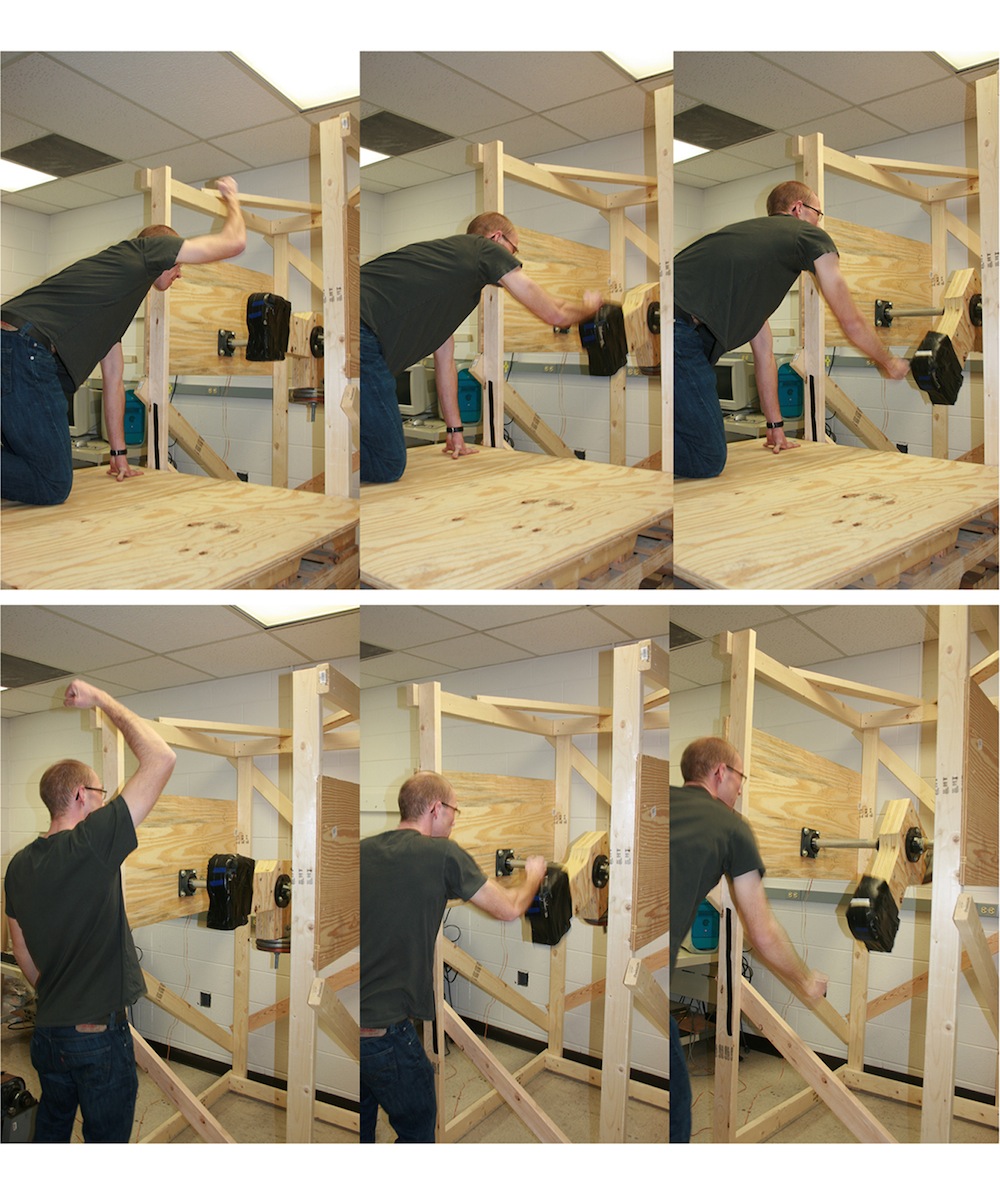Punchline in Story of Bipedalism: Our Ancestors Stood Up to Fight

Humans might have evolved our two-footed posture for its fighting advantage; we punch harder standing than on all fours, and downward punches are much more forceful than upward ones. This could also be one reason why many females prefer taller mates, a new study finds.
"Selection for aggressive performance and aggressive behavior could have been one of the factors that led to the evolution of bipedalism," said study researcher David Carrier, at the University of Toronto.
When humans are standing on two feet, they punch about 40 to 50 percent harder than when they are supporting themselves on all fours. Our punches also land much harder (about 200 percent harder) when punching downward than up, meaning all else being equal, taller males (who would be hitting their opponent from above) have a fighting advantage.
Boxing bonobos
Other animals, including many types of cats, dogs and primates, adopt a two-footed stance when fighting, but humans are the only ones who've kept that standing posture regularly. Theories as to why we do this include use of our arms for holding tools, supplies or babies, or to decrease sun exposure on the savannah. Carrier believes that better boxing could have also played a role.
For example, when our closest evolutionary cousins the chimpanzees fight, they stand on two legs and use their arms to hit each other. Great apes like chimps, bonobos and gorillas can't make fists with their hands, so they can't actually punch, making it difficult to directly compare our fighting abilities with theirs. The human participants in Carrier's study had to punch a bag at set angles, something that's difficult to train chimps to do with or without a fist.
Herman Pontzer, a researcher at Washington University who wasn't involved in the study, notes that the paper is an excellent test of human punching abilities, but is wary about its influence on evolution of bipedalism.
Sign up for the Live Science daily newsletter now
Get the world’s most fascinating discoveries delivered straight to your inbox.
Ancient aggression
"I don't feel that this work (or other papers showing that chimpanzees fight or display bipedally) provides particularly strong evidence that hominin bipedalism evolved as an adaptation for fighting," Pontzer told LiveScience in an email. "If chimpanzees and other quadrupeds can and do adopt bipedal postures to fight — and chimpanzees do this with some ferocity — than why would evolution favor a radical change in anatomy?"
Carrier says fighting played a role, and may fit in with other factors pushing humans onto two feet. He also posits another view: If humans' main competition was each other, then the increased fighting ability of two legs would make up for the decreased locomotion in the trees. He notes that Australopithicus, a human ancestor, had bodies specialized for this upright fighting stance, most likely between males.
"If the biggest threat were other individuals of their own species, which is true for modern humans, then what you have to be good at is competing with other members of your own species," Carrier said. "Locomotive competition would have been less important, and fighting performance would be more important."
The study is published May 18 in the journal PLoS ONE.
You can follow LiveScience staff writer Jennifer Welsh on Twitter @microbelover. Follow LiveScience for the latest in science news and discoveries on Twitter @livescience and on Facebook.
Jennifer Welsh is a Connecticut-based science writer and editor and a regular contributor to Live Science. She also has several years of bench work in cancer research and anti-viral drug discovery under her belt. She has previously written for Science News, VerywellHealth, The Scientist, Discover Magazine, WIRED Science, and Business Insider.
Why is yawning contagious?
Scientific consensus shows race is a human invention, not biological reality











